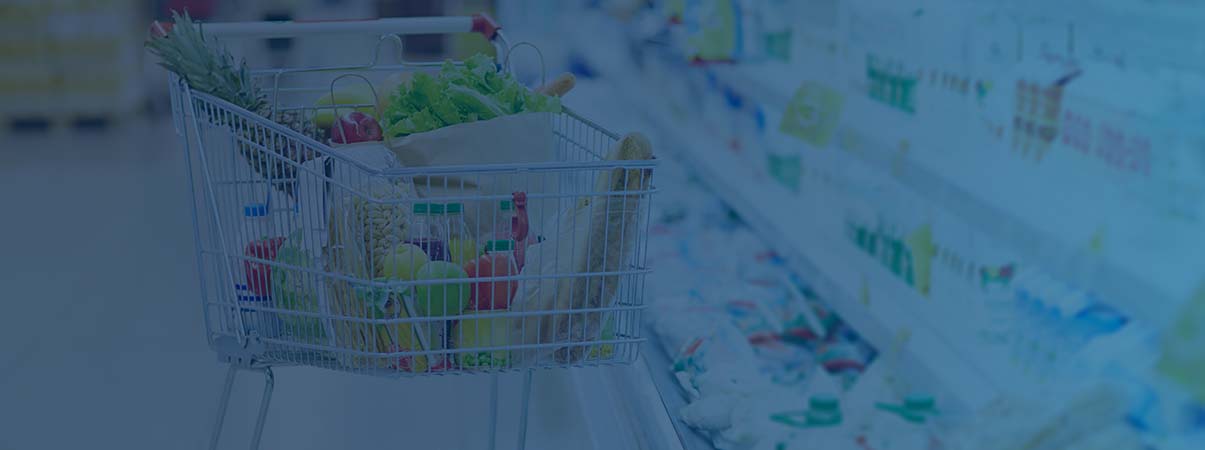Our food consumption habits evolve with time, scientific progress, the economic situation, and public health, among other things.
While these changes are challenging for the food and beverage industry, they also provide real opportunities for businesses to develop their offer by adapting to, and even anticipating, market developments. Here are 5 major food consumption trends observed in Canada and worldwide, and how to make the most of them.
Trend #1: Consumers want products that are good for the planet
Repeated calls for action from the scientific community to politicians and manufacturers in recent years to reduce greenhouse gas (GHG) emissions have been echoed by citizens around the world seeking to adopt a more responsible consumption style. How does this reflect their food consumption habits?
More local and seasonal products
This results in food choices that minimize the carbon footprint of shoppers, such as seasonal foods purchased from local producers.
Whether it’s to keep up with the trend or to deal with supply chain disruptions, a number of businesses in the FB sector are taking the plunge. Even if working with local producers and promoting seasonal products can be more expensive, their prices are predictable and allow you to regain control of the supply chain, reduce your logistics and improve the traceability of your products.
Anti-food waste
Consumers are increasingly concerned about food waste and are likely to support products that offer solutions to this issue. The production and sale of upcycled food are among the many ways to save on resources as an F&B business. These are the unformed fruits and vegetables, edible roots and other food scraps like fruit pulp which are not ordinarily intended for consumption but are actually safe to eat. There is a target to reach here for your unsold or slightly damaged products.
Eco-friendly packaging is also in demand with shoppers. According to a study conducted by the U.S. food company Cargill, 55% of Americans would be more likely to buy a food product with a sustainability claim on the packaging. Brewer AB InBev recently took a step in this direction by announcing that all of its packaging will be returnable or made from majority-recycled materials by 2025.

On a larger scale, consider improving your inventory management to limit losses via the use of software designed specifically for food and beverage manufacturing.
Trend #2: Consumers want healthy food
The promotion of foods without additives or allergenic components — sugar-free, salt-free, lactose-free, gluten-free — continues to gain momentum with the public. Yet the trend that associates health benefits with the removal of additives from products is changing. In an article by food consultant Jane Dummer, Julie Istead, RD director at Puratos Canada suggests that today, we see healthiness not only in the removal of ingredients but also in the addition of ingredients that consumers perceive as healthy.
Products that support immune and digestive health
This could explain the increase in products that support consumers' immune systems —supplemented with vitamin C, matcha, ginger or turmeric — as well as their digestive systems — multi-grains, sourdough products or probiotics. The market for immunity-boosting foods grew during the pandemic and the trend is expected to continue, which leaves the door open for FB businesses to explore.
Plant-based food but not only
Lastly, though often associated with a healthy diet, plant-based products continue to be popular for environmental or animal-welfare reasons, as the trend coincides with the rise of vegetarian, vegan or flexitarian diets. In all these cases, plant-based products meet the demand of consumers who want to eliminate or restrict their consumption of meat or animal products. What we know for sure is that vegetarian and vegan markets tend to be more dynamic and innovative. A recent example is the emergence of milk substitutes made from brewers’ grains, which is a double benefit for brewers like Coors, who are reaching out to the vegan market with upcycled ingredients.

Trend #3: Consumers want to shop online
E-marketplaces have grown by a whopping 17% over the past five years, shoppers are increasingly turning to fast, convenient retail experiences that offer contactless shopping and easy payment.
Promote your brand on social media
Hence, if you haven’t made the switch yet to online services and want to do so, set up an e-commerce site and rely on the power of social media to promote your offers. Some companies don't hesitate to sell their food products directly and strictly on Instagram. You can also plan a mobile app to simplify your transactions, including your orders.
Supported by targeted marketing efforts — such as creating special offers or digital business cards — moving to online sales can help you gain customers.
Enhance your food delivery solutions
On the distribution front, the pandemic has seen the rise of the "click-and-collect" model. As the popularity of online shopping continues to grow, some businesses are looking for sustainable, centralized solutions to organize their delivery services. The creation of dark stores can help: these stores don't serve customers on-site. They’re storage facilities organized like supermarkets designed specifically to support a company's e-commerce distribution strategy.
E-commerce creates opportunities for small businesses
Lastly, remember these tools and methods are not reserved for large companies: the e-commerce market is actually promising for smaller players, suggests this McKinsey survey. From 2017 to 2019, large brands in the U.S. have indeed lost volume at the rate of 1.5% a year while small brands grew 1.7%. This could be explained by consumers' openness to trying new brands through the rise of e-commerce.

Trend #4: Consumers want to reconnect with home cooking and the joy of eating
Consumers reconnected with “the joy of eating”, which has resulted in an increase in subscriptions to meal kits. The formula's success? It fills the need for entertainment, natural and premium products, and original recipes that open the door to culinary exploration.
Brands such as Hello Fresh or Good Food have successfully ridden the wave by offering their customers a variety of menus that allow them to return to traditional comfort foods and discover exotic flavours while providing options for alternative diets.
In 2022, the relatively high price of meal kits and the multiplication of online shopping possibilities helped grocery stores regain some ground.

Trend #5: Consumers want transparency
Consumers are increasingly interested in knowing not only where their food’s ingredients come from, but also where and how products are processed. For that reason, it’s important to communicate any information that can impact their choices: food safety, traceability, protection (or not) against intolerances, and when applicable, commitment to producing healthy, sustainable food.
Young people need to identify with brands
Be aware that consumers want to buy brands they identify with. While shoppers' budgets strongly influence their online purchases, they are also willing to pay more for what they consider to be high-quality products, such as organic food. This is especially true for younger consumers: some millennials want companies to align with their values, and two-thirds of them have already boycotted a company that took a position opposite their own on a specific issue.
Focus on your brand and values
Analyze your strengths and identify the values you want to convey to the consumer. Use them when thinking about your message and visual identity. An aesthetic that fully conveys your brand's intent and values invites the customer to identify with your company and allows you to rely on it with confidence.
Also, take displays and packaging as opportunities to stand out from the crowd. Think of appropriate designs that highlight what sets you apart from competitors (alternatives to animal proteins, organic farming, eco-responsible production cycle, etc.) and use social networks and applications to get them in the spotlight.

The evolution of food habits is inevitable and offers renewed opportunities to stand out in the Food and Beverage industry. Identify consumer behaviours that you can capitalize on and adapt your offer by leveraging digital tools and customer-centric marketing — your business will gain from it.
If you have more questions, do reach out to us.





